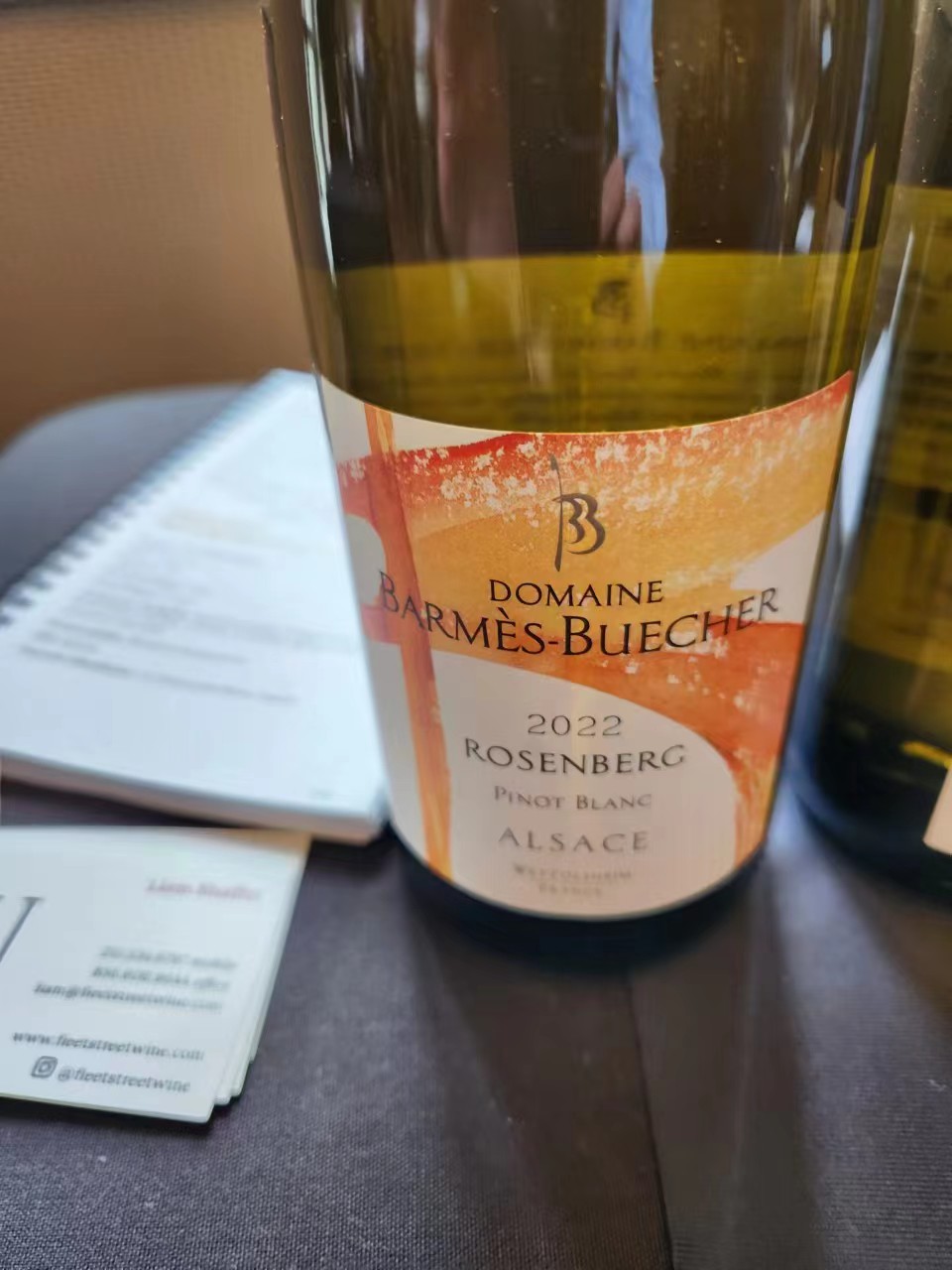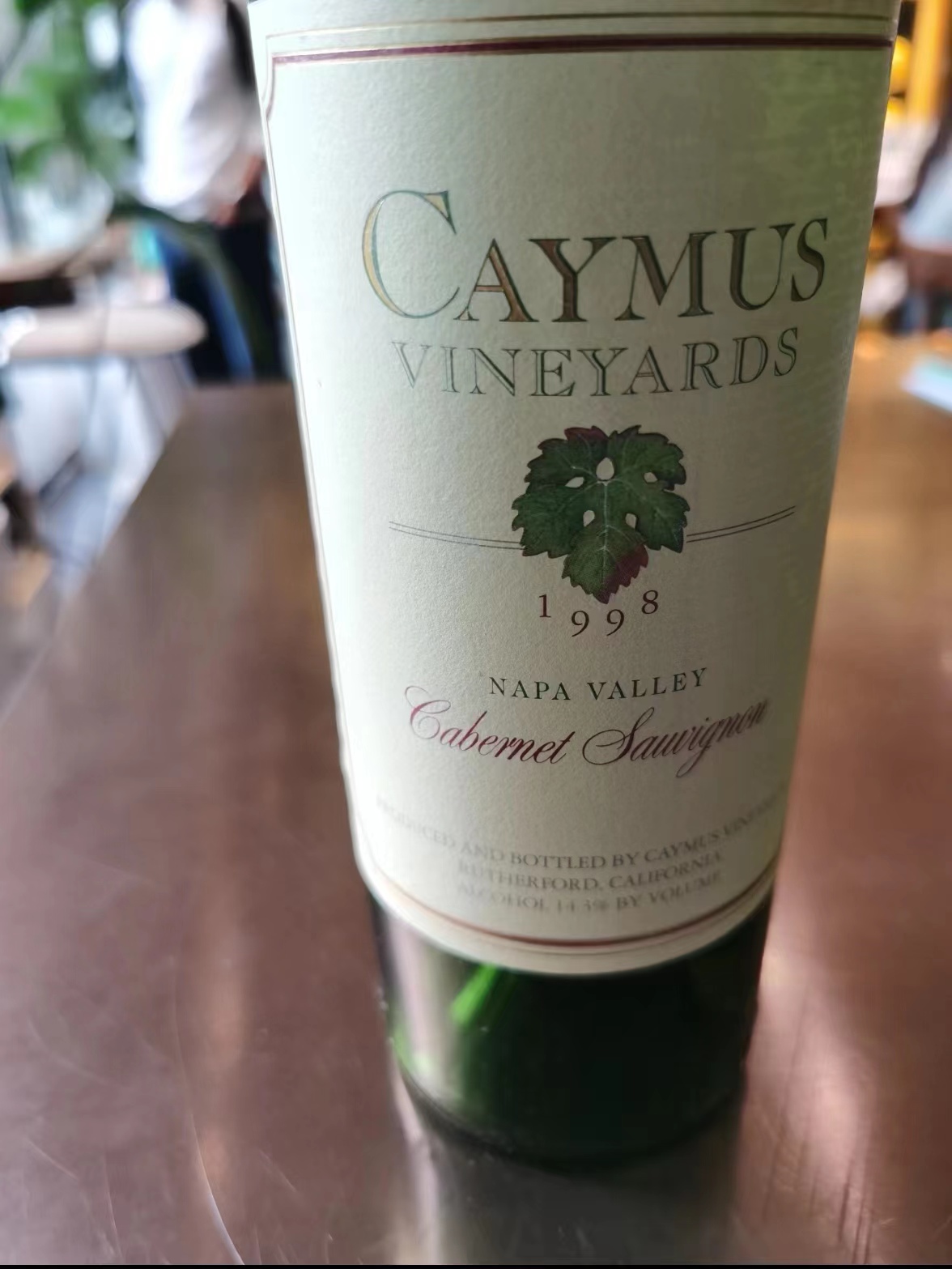Barmès-Buecher 2022 Pinot Blanc Rosenberg Alsace 92+
by Robert Millman

Your editor Ian D’Agata and I agree that Pinot Blanc is one of the most underrated varietals on planet earth. Is it the plain vanilla name? Pinot Noir somehow sounds serious. Blanc just means white—any white wine is a Blanc. The name sounds generic. As anyone who has tasted the best examples from Alsace and the Alto Adige knows, there is nothing generic about the taste and texture of first-rate Pinot Blanc! Alas in Alsace a wine labelled Pinot Blanc may very well be a blend including other white varietals—usually Auxerrois, but other white grapes as well. True Pinot Blancs usually exhibit considerable body (but a much lighter one when there’s no Auxerrois in the mix), a spicy, smoky note of variable degrees, and moderate acidity. It has less intrinsic organoleptic definition than Alsace’s Riesling, Pinot Gris, Muscat and Gewurztraminer wines. Pinot Blanc is a wonderful Terroir-Transmitter (along with Chardonnay.)
The wine I tasted recently was the excellent 2022 Barmes-Beucher Pinot Blanc Rosenberg. Barmès-Buecher was founded as recently as 1985. The two families had been grape growers since the seventeenth century and friends for many years. The union of the two families through marriage seems to have been all but inevitable. The estate owns 17 hectares (41 acres) spread over seven separate terroirs planted to eight varietals. It was certified bio-dynamic in 2001 (there are more bio-dynamically run estates in Alsace on a percentage basis than any other AOC in France!). I find the Barmès-Buecher wines to be uncompromisingly true to variety, splendidly alive, vigorous and pure. There is no veneer of easy drinkability in their wines. These are demanding wines which require focus and thought on the part of tasters.
The 2022 Rosenberg wine labelled Pinot Blanc is in fact a blend of 70% Pinot Blanc and 30% Auxerrois. The grapes are grown on one of Alsace’s best lieux-dits, Rosenberg. The soil is a mixture of sandstone, loam and limestone. The juice fermented for over ten months before completion. The estate always lets nature take its proper path—nothing is ever rushed. Impressively dense and almost thick for a Pinot Blanc with solid background acidity, the wine exhibited scents and flavours of pear, lime, and stone fruits, The lush factor was held in check by the acidity. I kept going back for repeated tastings—always a good sign. This is a food wine by which I mean it will work beautifully with many cuisines. Reasonably priced, the wine is another example of just how good Alsace wines can be. Drinking Window: 2024-2030.
Caymus Vineyards 1998 Cabernet Sauvignon Napa Valley California 93
by Ian D’Agata

Bright red-garnet colour. Inviting aromas of black plum, blackberry, cedar, cocoa and coffee build slowly with aeration and are complicated by a welcome whisper of minerality. Then bright and plush, with good lift to the layered dark berry, plum and graphite flavours. A note of rocket salad that may not be to everybody’s liking emerges on the long clean finish. I remember this wine being fairly ready to drink upon release (I was in the USA at that time) and it has held up very well. Less famous and less sought after than the Caymus Special Selection bottling, the lighter-styled, easier to drink Napa Valley bottling described here was often much better than given credit for. Drinking window: 2024-2030.
Rich and exotic but reined in compared to many virtually undrinkable blackberry-vanilla syrups that were being made in California at the time, the Caymus Vineyards 1998 Cabernet Sauvignon Napa valley is a rather elegant, classically-styled Bordeaux blend (this vintage was a blend of 88% Cabernet Sauvignon, 10% Merlot and 2% Cabernet Franc) that also boasts the creamy ripe, sunlit fruit typical of Napa Valley. Those lucky enough to still have bottles in their cellar or that manage to snag one on a restaurant wine list will treat themselves to a that embodies the best of both New and Old World Cab wines. Caymus is rightly recognized as a Cabernet Sauvignon specialist, and it’s hard to go wrong with their wines: but as great as the Special Selection is, I actually think that it is the Napa Valley bottling that is more typical of Napa Valley’s classic Cabernet Sauvignon wines (clearly not those that were made to score highly in the body-builder wine heyday).

 中文
中文



